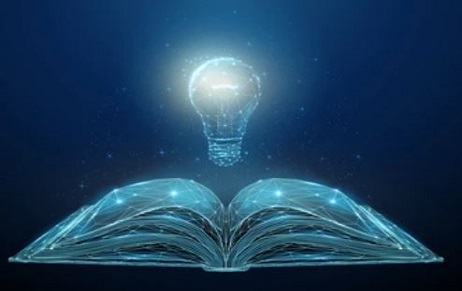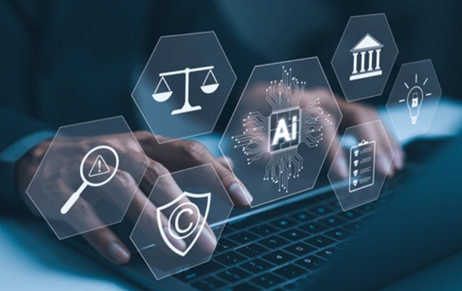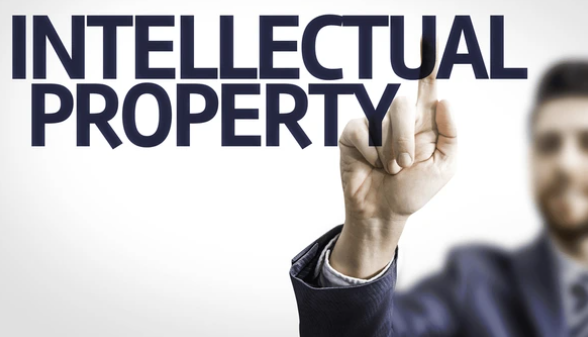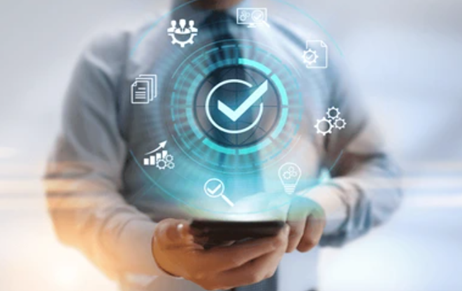Artificial intelligence has a wide range of effects, including on intellectual property law. At best…
Intellectual Property Rights in the Age of Artificial Intelligence: Navigating Challenges and Seizing Opportunities
Abstract
This paper delves into the profound integration of artificial intelligence (AI) into contemporary life and its impact on intellectual property rights (IPR). Analyzing the convergence of AI and IPR laws, it elucidates the challenges and ambiguities in recognizing AI as inventors or creators. Amidst AI’s transformative potential, a balanced regulatory framework is imperative to safeguarding individual IPR rights while optimizing the societal benefits of AI innovation.
Introduction
In the contemporary landscape of the 21st century, our daily endeavors are invariably intertwined with artificial intelligence (AI) across various facets of our lives.. AI is ingrained in human life, and there are various types of work in society which is become impossible to do without the help of artificial intelligence. What AI is doing for us is unimaginable even to think. We are witnessing a new revolution in the world of artificial intelligence. AI is going to impact every aspect of human life such as employment, education, reducing on-the-job hazards, predicting natural disasters, and most importantly creativity and many more areas. Companies are employing AI as a tool to drive innovation, and in certain instances, utilizing it to potentially innovate autonomously. This marks a significant shift in the prevailing paradigm. The commercial and social impact of this is going to be tremendous. AI and intellectual property rights (IPR) aren’t just something for the patent and copyright geeks to nerd out on although it is that, it is something that going to have a lot of commercial and social impacts as AI challenges a lot of the ways we function in IPR. When artificial technologies are utilized for creating innovations, such as employing evolutionary algorithms for antenna design or engaging IBM Watson to produce music, IPR laws become relevant. AI is doing lots of creative work in the fields of animation, web apps, images, music, designing, and various other things. Most of the creative work that AI is doing in some or other way impacts the intellectual property rights of other people. AI affects the current structure of intellectual property rights,
Artificial intelligence in the contemporary era
AI is often considered as a subset of computer science that focuses on simulating intelligence in machines but this definition does not do justice with the AI scope and its vast features. Sometimes it is also considered as a computer system having proficiency in doing the tasks that historically required human intelligence. These involve the identification of speech, decision-making, and pattern recognition.
In the last seven decades, AI has undergone significant development. In the year 1950 “Alan Turing” the famous mathematician discussed artificial intelligence in his research paper and introduced the ‘Turing test’ to determine the intelligence capability of machines. Subsequently, John McCarthy introduced the term “artificial intelligence.” In 1956, the initial AI software named “Logic Theorist” was developed by Allen Newell, J.C. Shaw, and Herbert Simon.
Ai is like Pandora’s box and it has a lot of unknown potential applications. Ai has both pros and cons. Ai doesn’t understand what it’s doing in the way that a person does but functionally what it is doing is the same thing that an author or an inventor may be doing. It becomes very critical to protect the interest of the author or the inventors.
Intellectual property right
The World Intellectual Property Organization coordinates the policies and national initiatives around intellectual property rights and has defined intellectual property as referring to the “unique value creation of the human intellect that results from human ingenuity, creativity, and inventiveness”. IPR is the right for the ownership of the property which is not tangible and is the result of your intellect. It provides legal entitlements that cover the privileges granted to individuals who are the creators of original work, stemming from their intellectual creativity or capability.
According to the WIPO convention of 1967, IPR is defined in Article 2(viii) [1].
Intellectual property covers the rights relating to:
- performances by artists, phonograms, and broadcasts;
- literature, art, and science;
- advancements in diverse human endeavors;
- scientific discoveries;
- protection against unfair competition.
- trademarks, service marks, commercial names, and designations;
- industrial designs;
and any other rights stemming from intellectual endeavors in industrial, scientific, literary, or artistic spheres.
Intellectual property rights can be mainly classified into three types:
- copyright
- patent
- trademark
Convergence of intellectual property rights and artificial intelligence.
AI engages in diverse creative tasks, spanning from the generation of videos, audio, music, photography, art, and written text encompassing poetry, fiction, and programming code. And IPR serves to protect the creations of the human intellect, encompassing inventions, literary and artistic works, designs, symbols, as well as names and images utilized in commercial endeavors. However, IPR doesn’t protect the work created by artificial intelligence because, in the Copyright Act 1957, Patent Act 1970, and Trade marks Act 1999 there is no reference to the work created by artificial intelligence will be protected under the law. IPR aims to encourage and acknowledge endeavors that result in inventive or creative outputs, as these contributions benefit society in some way. However, in cases where AI technologies play a significant role in generating inventions or creative works, there is no need to incentivize or reward machines for performing tasks they were programmed to execute. AI while doing different types of work, processes large amounts of the data available to it and looks for different patterns to create its work. Usually in the process of creating its work AI causes injury to the intellectual property rights of others.
Challenges related to safeguarding the creation of artificial intelligence
The key challenge that AI creation faces in India is the law in itself, Indian IPR law does not recognize AI as the inventor or the owner of the creation.
Copyright law
One of the key questions regarding AI-generated copyright work in India is, whether the work of the AI meets the originality criterion laid down in section 13 of the Copyright Act 1957.
The term “original” is not defined in the act, in the “Eastern Book Co v D B Modak” [2] the Supreme Court laid down the “modicum of creativity” approach to determine whether the creation will be accorded copyright protection or not. According to this approach, the product must meet the “baseline level of creativity” and shouldn’t be solely the result of proficiency and effort. As the creativity prerequisite is not particularly high, an AI-generated creation can satisfy the criteria for originality and qualify for copyright protection.
Another question regarding AI-generated copyright work in India is, whether AI should be given ownership of the work or not.
As per section 2(d) of the act the author of “any literary, dramatic, musical or artistic work which is computer-generated” to be “the person who causes the work to be created”. It is in line with the copyright law of the UK. As per the Indian jurisprudence for IPR laws, the term “person” encompasses both an individual human being and a collective entity such as an organization or association composed of human beings. The Practice and Procedure manual of (2018) [3] provided by the Copyright Office, explicitly confirms the practice of assigning authorship of computer-generated works to human individuals. Which states that for copyright registration only “the details of the person(s), who has actually created the work i.e. only natural person (human being), should be provided”.
Also, section 57 of the act says that the author has Moral rights, and incorporates the right to paternity and the right to integrity. When AI is given the authorship of the work then AI will most likely be unable to find out if any demonstration has impacted the owner of the work. In “Amarnath Sehgal v Union of India” [4] the Delhi high court recognized the “author’s moral rights” under Section 57 of the Copyright Act (i.e., the entitlement to paternity, the right to preserve the purity or integrity of a work, and the right of withdrawal).
Therefore, within the present technological context and considering the existing legal framework, even though an AI-generated creation may be recognized as ‘original,’ the attribution of authorship to the AI system may not be warranted.
Patent law
The term “inventor” is not explicitly defined in the Indian Patent Act 1970. Thus, can it be assumed that AI also falls within the scope of the term “inventor”?

The term ‘inventor’ is not explicitly defined in the Indian Patent Act 1970. however, section 6 of the Patent Act talks about who is eligible to file the patent. As per section 6 of the Act, “an application for patents can be made by any person who claims to be the true and first inventor, assignee of such person, or by a legal representative of such person”. Recently in one of the applications numbered 202017019068, The Controller has objected to acknowledging AI as an inventor, referring to the stipulations outlined in Section 2 and Section 6 of The Indian Patents Act, 1970. In essence, the objection is grounded in the interpretation and constraints specified in these sections, which do not align with recognizing AI entities as inventors within the framework of the patent law. Section 2(1)(y) says that “true and first inventor does not include either the first importer of an invention into India or a person to whom an invention is first communicated from outside India”. While Section 2(1)(y) outlines individuals or entities ineligible to be recognized as inventors, a potential ambiguity arises when determining the true and first inventor of an invention where AI is the actual originator. This situation introduces uncertainty in identifying the rightful and original inventor, particularly when AI is the primary creative force behind the invention. in the case of “Som Prakash Rekhi vs Union Of India & Anr,” [5] the supreme court held that a “jurisdictional person is the one to whom the Law attributes ‘personality’. When we refer to a juristic personality, we refer to a legal entity that has the right to sue or that can be sued by another entity”. Inherently, AI cannot independently exercise the various rights or fulfill the necessary responsibilities of any legal entity.
In Thaler v Vidal, the USPTO [6] (United States Patent and Trademark Office) held that DABUS (devices for the autonomous bootstrapping of unified sentience) did not qualify as an inventor because It fails to fulfill the criteria for being classified as an individual (natural person or human) under the current US laws. According to the decision, under the current laws to be an inventor, there must be “intentionality and culpability”, which AI lacks because it cannot legally enter into contracts.
Trademark law
One of the areas where both trademarks and AI intersect with each other is in creation of new brands and trademarks. The unique combination of words, logos, and designs can be potentially generated by AI and can be used as trademarks. This raises the question of the authenticity and uniqueness of trademarks generated by AI
As far as, the effect of AI on intellectual property is limited to the domain of “patent law and patent protection of AI technologies”. But in the current scenario, AI is causing greater challenges to the trademark law as well. According to section 9 (2) of the Trademark Act 1999, “registration can be done of only those trademarks which are distinctive in nature”, and the “trademarks which consist exclusively of marks or indications which have become customary in the current language or the bonafide and established practices of the trade, shall not be registered”. In “Aachi Masala Foods Pvt. Ltd vs Aachi Cargo Channels Pvt” [7], in the name of both the company the common word “Aachi” is used to mean grandmother in Tamil, In this case, Aachi Masala Foods Pvt. Ltd has asserted that Aachi Cargo Channels Private Limited has violated its trademark, thereby rendering the latter liable for damages. The Madras High Court held that the term “Aachi” possesses a distinctly commonplace nature, precluding the establishment of an exclusive monopoly over its usage. From here one can deduce that the underpinning principle of trademark rights revolves around the imperative to prevent any potential confusion regarding the source, origin, or sponsorship of goods or services. Therefore, the trademark generated by the AI will be protected under the law until and unless it does not cause any confusion and potential threat to the other business. Trademark law aims to safeguard the rights of individuals involved in the production and sale of goods bearing unique trademarks from infringement by others attempting to deceitfully pass off their products as imitations.
However, it doesn’t mean that AI can itself own the trademark, under the trademark act, it is not explicitly defined who can own the trademark nonetheless a registered proprietor under section 2(v) and registered user under section 2(x) has been defined as per that a person can only register a trademark or be a registered user.
Analysis from the Indian context
AI undeniably holds a crucial role in societal advancement, but its impact on IPR poses a significant challenge. The significant contribution of AI towards society is evident, yet the potential threats it causes to individuals’ IPR rights necessitate careful and judicious regulation. We have to take a balanced approach between harnessing the benefits of AI for societal development and safeguarding the IPR rights of individuals becomes of great importance in navigating the evolving landscape of technological innovation. in the high-tech sector, it is vital to have effective regulation as it ensures order and safeguards, it is a crucial element for companies seeking to attract investments in research and development (R&D) and their technological advancements. The confidence of companies in protecting their innovative ideas through regulatory frameworks is paramount. Without such assurances, there is a risk that companies may hesitate to allocate funds, potentially slowing down the pace of technological development. The current application of AI in specialized research environments can enhance efficiency and churn out novel thinking. However, evaluating the feasibility of these outcomes still requires expert human interpretation.
Inventors of AI by taking advantage of the loopholes in the laws of various countries and make AI as their co-inventor. In the United States in the case of “Plastipak Packaging, Inc. v. Premium Waters, Inc.” [8], it was held that AI’s inability (so far) to recognize the utility of an invention. rendering it unable to fulfill the co-inventors’ stipulated criteria. “when an invention is made jointly, the joint inventors need not contribute equally to its conception” as laid out in 2018. Even if the inventors are using AI as a “sophisticated tool” for experimentation and discovery, humans should continue to be recognized as actual inventors. An AI is not yet capable of becoming independent or coinventor, inventorship, or conception. Accordingly, the current system should continue to support human innovators.
Conclusion
Artificial intelligence has indisputably emerged as a pivotal force in shaping the trajectory of societal progress. Its multifaceted contributions transcend diverse sectors, augmenting efficiency, fostering innovation, and catalyzing transformative changes in industries. However, the pervasive influence of AI concurrently poses a potential threat to society, more specifically to intellectual property rights. Striking a delicate balance between leveraging the advantages of AI advancements and mitigating the associated risks becomes imperative for fostering a harmonious coexistence between technological evolution and societal well-being. A judicious and balanced regulatory approach to AI is essential to optimize its potential benefits. Despite remarkable progress in AI, impediments persist in attributing ownership of creative works to AI, presenting barriers to seamless integration into the ownership framework. Addressing these intricacies is paramount before confidently entrusting AI with the responsibility and ownership of intellectual creations.
Author: Hemendra Vaishnav, A Student at Hidayatullah National Law University, in case of any queries please contact/write back to us via email to chhavi@khuranaandkhurana.com or at Khurana & Khurana, Advocates and IP Attorney.
References
| [1] | Convention Establishing the World Intellectual Property Organization art.2. |
| [2] | Eastern Book Co v D B Modak, (2008) 1 SCC 1. |
| [3] | PRACTICE AND PROCEDURE MANUAL. |
| [4] | Amarnath Sehgal V Union Of India, 2005 (30) Ptc 253 Del. |
| [5] | Som Prakash Rekhi Vs Union Of India & Anr, 1981 AIR 212, 1981 SCR (2) 111. |
| [6] | Thaler V Vidal, No. 21-2347 (Fed. Cir. 2022). |
| [7] | Aachi Masala Foods Pvt. Ltd Vs Aachi Cargo Channels Pvt, Air 2014 Mad 2. |
| [8] | Plastipak Packaging, Inc. V. Premium Waters, Inc, No. 21-2244 (Fed. Cir. 2022). |



